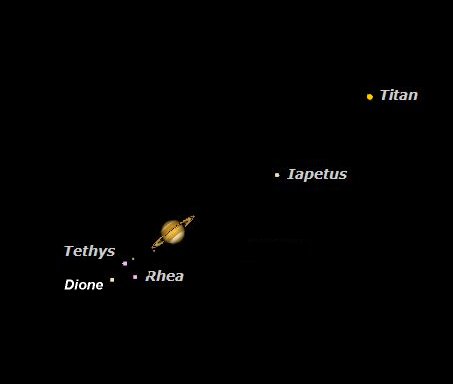Well it certainly was cold enough Monday night. At least the wind had died down from Sunday’s arctic conditions.
I determined I was going to observe as long as the wind chill was half reasonable. And it was. I spent 10 minutes shoveling hard snow from my backyard patio to clear a spot for my 6 inch Celestron telescope.
I have a reasonable eastern and western horizon. I pointed the telescope at the globular cluster M79 in Lepus. I was anxious to observe this object as there are not a lot of globulars to be seen in the winter months. But again this object frustrated me. Could not see it. I probably was staring right at it, as the telescope was pointing very accurately tonight. I tried moving the scope through the vicinity it was supposed to be in; I tried different eyepieces – low power, high power, back to low again. Nothing worked. Time to move on I thought. The sky was somewhat bright but the seeing seemed to be pretty good.
I have Sue French’s Celestial Sampler at home. The sound of Tau Canis Majoris Cluster (NGC 2362 or Caldwell 64)and her description of this object intrigued me: “a bright sapphire amid a tiny bed of lesser jewels”. This object certainly did not disappoint, with a very bright bluish white star at the center of a smallish open cluster of stars. Quite nice. According to French Tau is a blue supergiant that shines with the light of 50,000 suns. I could have used some of that heat tonight I can tell you! In addition, it is one of the youngest star clusters known. Young and pretty, I bet this is a pretty popular star up there in Canis Major.
I then decided to give Saturn another look. To me, the rings of Saturn look really closed up. I remember how they looked in 2003, opened to their maximum. But Saturn is still so spectacular. I started looking for Saturn’s moons, to see if I could see more moons than I did in January. Titan I sighted right away at a fair distance from the planet at approximately 10 o’clock (pointer). Then on the other side of Saturn I spotted a moon at about 4 o’clock. I looked a little longer and saw another tiny diamond near by. And then another one to the side of it. The three moons created a cute little triangle to the lower right of the planet. I thought I saw another moon on the other side of the planet from the “triangle”, about half way between Titan and Saturn. I still have to check my Starry Night software to see if this was perhaps Iapetus. I do know from checking Sky & Tel’s “Saturns Moons” that the triangle was composed of Tethys at the top and Rhea at the bottom on the left and Dione on the right corner. I did not spot Enceladus. I think that is one or perhaps two more moons spotted as compared to last time.

Quite happy with my moon hunting for Saturn I thought I would check out some double stars. Double stars are quite enchanting (to me anyway) and you can observe them even if the sky is quite soupy looking. Tonight I observed Iota Cancri, a pretty double star that is a little reminiscent of beautiful Albireo (I can’t see Cygnus from my home at this time of year – can’t wait until the summer!). I checked out several doubles, including Algieba or Gamma Leonis which is a fairly tight couple of dingey yellowish looking stars. Also observed Theta 2 Cancri (a couple of evenly matched white coloured stars), Delta Geminorum, Castor (an interesting triple star) and I believe Eta Puppis. Just scrolled through the Celestron’s list of doubles and kind of took a tour. I tried to guess the separation in arc-seconds of the stars and then checked on the telescopes handset by scrolling through the “info” to see what how accurate I was. Sometimes I was close, but not always. Need more practice.
I saw Arcturus rising in the East and I thought: I might be able to see M3 in Canes Venatici. I keyed in M3 and the telescope slewed and their it was, a big beautiful globular cluster with handy bright stars in the field of view to help with focus. Even with very high power I could not resolve individual stars, although I believe I was on the threshold. M3 looked a little irregular in shape. By this point the numbness I was feeling in my right foot was starting to spread up my right leg, so I decided to get out of the cold.
I was happy with what I observed, despite the bitter cold.
